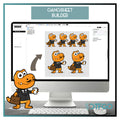In today’s digital landscape, having an e-commerce store isn’t enough—you need visibility. Search Engine Optimization (SEO) plays a critical role in bringing potential customers to your website, boosting your sales, and creating a sustainable business. With the right SEO strategies, you can attract quality traffic without spending heavily on ads.
If you’re looking to enhance your e-commerce store’s online presence, this guide will walk you through the key SEO tactics to help you grow.
1. Why SEO is Essential for E-Commerce Success
SEO isn’t just about ranking high on Google—it’s about attracting qualified traffic that converts. Here’s why SEO should be a priority for your store:
- Cost-Effective Marketing: Unlike paid ads, SEO brings long-term traffic without continuous spending.
- Increased Visibility: Higher rankings mean more people find your products before your competitors.
- Better User Experience: SEO best practices improve site speed, navigation, and mobile-friendliness.
- Higher Conversion Rates: People who find your store through search engines trust organic results more than ads.
2. Keyword Research: The Foundation of E-Commerce SEO
To rank on Google, you need to target the right keywords—terms people are already searching for. Here’s how to do it:
✅ Find High-Intent Keywords
Use SEO tools like:
- Google Keyword Planner
- Ahrefs
- SEMrush
- Ubersuggest
Types of Keywords to Focus On:
- Product Keywords: (e.g., "custom DTF transfers for t-shirts")
- Category Keywords: (e.g., "best print-on-demand services")
- Long-Tail Keywords: (e.g., "how to start a clothing brand with no inventory")
Pro Tip: Prioritize keywords with high search volume but low competition for better ranking chances.
3. Optimize Your Product Pages for Higher Rankings
Each product page is an opportunity to rank on Google. Here’s how to optimize it:
✅ Optimize Product Titles and Descriptions
- Include your main keyword in the title and description.
- Write compelling, benefit-driven descriptions instead of just listing features.
🚫 Bad Example: "Cotton T-Shirt - Red - Unisex - Available in M/L/XL"
✅ Good Example: "Premium Cotton T-Shirt – Breathable, Comfortable, and Perfect for Everyday Wear"
✅ Use High-Quality Images (with Alt Text)
- Rename image files with SEO-friendly names (e.g., dtfgo-print-ready-transfer.webp)
- Add alt text describing the product and including keywords (Google can’t “see” images, but it reads the alt text!)
4. Build an SEO-Friendly Website Structure
Google rewards sites that provide a smooth, user-friendly experience. Follow these best practices:
✅ Improve Site Navigation
- Use a clear category structure (e.g., Home > T-Shirts > Printed T-Shirts).
- Keep URLs short, descriptive, and keyword-rich (e.g., yoursite.com/custom-dtf-transfers instead of yoursite.com/p12345).
✅ Speed Up Your Website
- Compress images without losing quality using tools like TinyPNG.
- Use a fast-loading Shopify theme optimized for speed.
- Minimize excessive apps and plugins that slow down performance.
✅ Make Your Store Mobile-Friendly
- Google prioritizes mobile-friendly sites! Test your site’s responsiveness using Google’s Mobile-Friendly Test tool.
5. Create High-Quality Content (Blogging & SEO)
A blog is one of the best SEO strategies for long-term traffic.
What to Write About?
- “How-To” Guides (e.g., "How to Use DTF Transfers for Custom Apparel")
- Trend Analysis (e.g., "The Rise of Print-on-Demand in 2025")
- Product Comparisons (e.g., "DTF vs. Screen Printing – Which is Better?")
Pro Tip: At the end of each blog, subtly promote your products (e.g., "Looking for premium DTF transfers? Check out our latest collection!")
6. Off-Page SEO: Build Authority with Backlinks
Backlinks (links from other websites to yours) tell Google that your store is trustworthy and authoritative. Here’s how to get them:
✅ Guest Blogging – Write articles for industry blogs and include a link back to your store.
✅ Influencer Collaborations – Get influencers to link to your products in reviews or social media posts.
✅ E-Commerce Directories – Submit your store to directories like Google My Business, Yelp, and niche marketplaces.
Pro Tip: Avoid spammy backlinks—quality is more important than quantity!
7. Local SEO: Attract Nearby Customers
If you have a physical store or offer local delivery, use local SEO to attract buyers:
- Claim Your Google My Business Listing
- Encourage Customer Reviews (Google prioritizes highly-rated stores!)
- Use Location-Specific Keywords (e.g., "custom printed t-shirts in Los Angeles")
8. Track Your SEO Performance
SEO is an ongoing process. Monitor your progress using:
- Google Analytics – See where your traffic is coming from.
- Google Search Console – Identify ranking improvements and fix errors.
- Ahrefs/SEMrush – Analyze backlinks and keyword rankings.
Regularly update your strategy based on what’s working and what’s not.
Final Thoughts: SEO is a Long-Term Investment
Unlike paid ads, SEO results don’t appear overnight. But once your store starts ranking, you’ll get consistent, free traffic that keeps growing over time.
🔹 Key Takeaways:
- Optimize your product pages with SEO-friendly titles, descriptions, and images.
- Publish valuable blog content to attract organic traffic.
- Build high-quality backlinks and improve site speed and navigation.
- Use local SEO if you have a physical presence.
💡 Want to scale your e-commerce store? Get high-quality DTF transfers to create custom apparel that sells!






